IN THIS ARTICLE
FastNoise Gradient Component
Add the FastNoise Gradient component to use one of the noise generation algorithms from the FastNoise library to generate a gradient. The noise generation algorithm is set in the component’s Noise Type property.
Provider
Dependencies
- Gradient Transform Modifier
- One of the following Shape components: Axis Aligned Box, Box, Capsule, Compound, Cylinder, Disk, Polygon Prism, Quad, Shape Reference, Sphere, or Tube, to define the Gradient Transform Modifier’s area.
Noise types
| Noise Type | Description | Example Gradient |
|---|---|---|
Value | Generates a White Noise gradient based on interpolated values from XYZ-coordinates. |  |
Value Fractal | Results from the Value algorithm are run through a fractal function. | 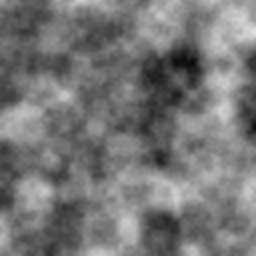 |
Perlin | Generates values from the Perlin noise algorithm, a noise algorithm where visual features are all of similar size. |  |
Perlin Fractal | Results from the Perlin noise algorithm are run through a fractal function. | 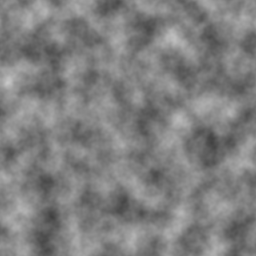 |
Simplex | Generates values from the Simplex noise algorithm, a variation of Perlin noise with fewer directional artifacts. | 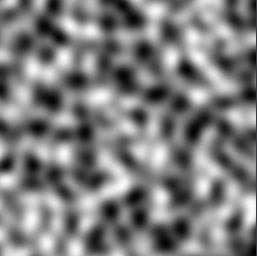 |
Simplex Fractal | Results from the Simplex noise algorithm are run through a fractal function. |  |
Cellular | Generates values from a cellular noise algorithm, which assigns values based on randomly distributed feature points; each world position is assigned the value of the closest feature point. | 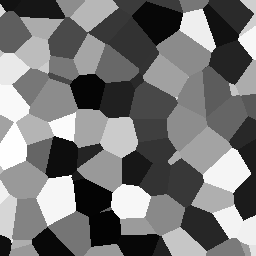 |
White Noise | Generates values from XYZ-coordinates, which produce extremely different values for adjacent samples. | 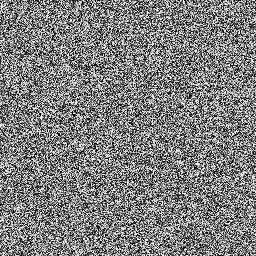 |
Cubic | Generates values directly from XYZ-coordinates that are then run through cubic interpolation with neighboring values. The results are similar to Perlin noise, but with fewer directional artifacts and with a higher occurrence of extreme values. | 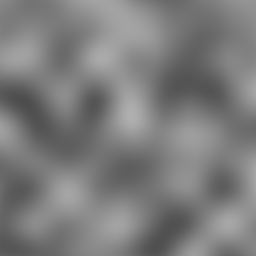 |
Cubic Fractal | Results from the Cubic noise algorithm are run through a fractal function. | 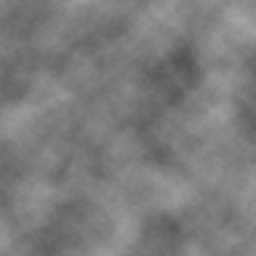 |
Note:Not all combinations of Noise Type and noise property settings have the same performance characteristics.
FastNoise Gradient properties

| Property | Description | Values | Default |
|---|---|---|---|
| Preview | Displays the output gradient of this component after all properties are applied. Click the previewer icon in the top of the preview image to show a larger preview of the gradient in a dockable window. | ||
| Pin Preview to Shape | Sets an entity with a compatible Shape component to use as the bounds of the preview if Constrain to Shape is Enabled. | EntityId | Current Entity |
| Preview Position | Sets the world location of the preview. This field is available only if there is no entity selected in Pin Preview to Shape. | Vector3: -Infinity to Infinity | X:0.0, Y:0.0, Z:0.0 |
| Preview Size | Sets the dimensions of the preview. | Vector3: 0.0 to Infinity | X:1.0, Y:1.0, Z:1.0 |
| Constrain to Shape | If Enabled, the gradient preview uses the bounds of the entity selected in Pin Preview to Shape.This field is available only if an entity is selected in Pin Preview to Shape. | Boolean | Disabled |
| Noise Type | Sets the noise generation algorithm used to generate the gradient. | Value, Value Fractal, Perlin, Perlin Fractal, Simplex, Simplex Fractal, Cellular, White Noise, Cubic, or Cubic Fractal | Perlin Fractal |
| Random Seed | Sets the initialization value for the pseudorandom noise generation algorithm. Each value generates a different pattern of noise. | Integer: 1 to Infinity | 1 |
| Frequency | Sets the frequency of the generated noise. Smaller values result in noise that is dilated and larger values result in noise that is condensed. | Float: 0.0001 - Infinity | 1.0 |
| FastNoise Advanced Settings - Interpolation | Sets the function used to smooth between gradient values. Refer to the following section for Interpolation type descriptions and examples. | Linear, Hermite, or Quintic | Quintic |
| Generate Random Seed | Sets the Random Seed property to a random value. |
Value Interpolation type examples
| Interpolation Type | Description | Example Gradient |
|---|---|---|
Linear | Linear interpolation produces angular artifacts. | 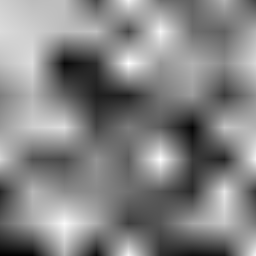 |
Hermite | Hermite interpolation produces smooth blurred values. |  |
Quintic | Quintic interpolation produces more defined edges than Hermite without the angular artifacts of Linear. |  |

| Property | Description | Values | Default |
|---|---|---|---|
| Preview | Displays the output gradient of this component after all properties are applied. Click the previewer icon in the top of the preview image to show a larger preview of the gradient in a dockable window. | ||
| Pin Preview to Shape | Sets an entity with a compatible Shape component to use as the bounds of the preview if Constrain to Shape is Enabled. | EntityId | Current Entity |
| Preview Position | Sets the world location of the preview. This field is available only if there is no entity selected in Pin Preview to Shape. | Vector3: -Infinity to Infinity | X:0.0, Y:0.0, Z:0.0 |
| Preview Size | Sets the dimensions of the preview. | Vector3: 0.0 to Infinity | X:1.0, Y:1.0, Z:1.0 |
| Constrain to Shape | If Enabled, the gradient preview uses the bounds of the entity selected in Pin Preview to Shape.This field is available only if an entity is selected in Pin Preview to Shape. | Boolean | Disabled |
| Noise Type | Sets the noise generation algorithm used to generate the gradient. | Value, Value Fractal, Perlin, Perlin Fractal, Simplex, Simplex Fractal, Cellular, White Noise, Cubic, or Cubic Fractal | Perlin Fractal |
| Random Seed | Sets the initialization value for the pseudorandom noise generation algorithm. Each value generates a different pattern of noise. | Integer: 1 to Infinity | 1 |
| Frequency | Sets the frequency of the generated noise. Smaller values result in noise that is dilated and larger values result in noise that is condensed. | Float: 0.0001 - Infinity | 1.0 |
| Octaves | Sets the number of recursions of pattern generation. Higher values produce finer details. Values higher than 4 may not be perceptible. | Integer: 0 - 8 | 4 |
| Lacunarity | Sets a frequency multiplier to apply to successive Octaves. | Float 0.0 to Infinity | 2.0 |
| Gain | Sets a relative strength multiplier to apply to successive Octaves. | Float: 0.0 to Infinity | 0.5 |
| FastNoise Advanced Settings - Interpolation | Sets the function used to smooth between gradient values. Refer to the following section for Interpolation type descriptions and examples. | Linear, Hermite, or Quintic | Quintic |
| FastNoise Advanced Settings - Fractal Type | Sets the method of fractal combination. Refer to the following section for Fractal Type descriptions and examples. | FBM, Billow, or Rigid Multi | FBM |
| Generate Random Seed | Sets the Random Seed property to a random value. |
Value Fractal Interpolation type examples
| Interpolation Type | Description | Example Gradient |
|---|---|---|
Linear | Linear interpolation produces angular artifacts. |  |
Hermite | Hermite interpolation produces smooth blurred values. |  |
Quintic | Quintic interpolation produces more defined edges than Hermite without the angular artifacts of Linear. |  |
Value Fractal Type examples
| Fractal Type | Description | Example Gradient |
|---|---|---|
FBM | FBM or fractional Brownian motion adds multiple frequencies and amplitudes of the noise signal together. |  |
Billow | A variant of FBM. Billow adds the absolute value of multiple frequencies and amplitudes of the noise signal together. This produces extreme lows in the gradient’s values. |  |
Rigid Multi | A variant of FBM. Rigid Multi subtracts the inverse of the absolute value of multiple frequencies and amplitudes of the noise signal from each other. This produces extreme highs in the gradient’s values. | 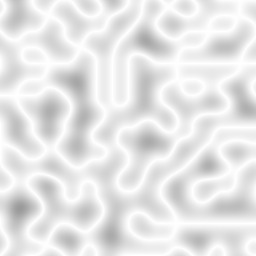 |
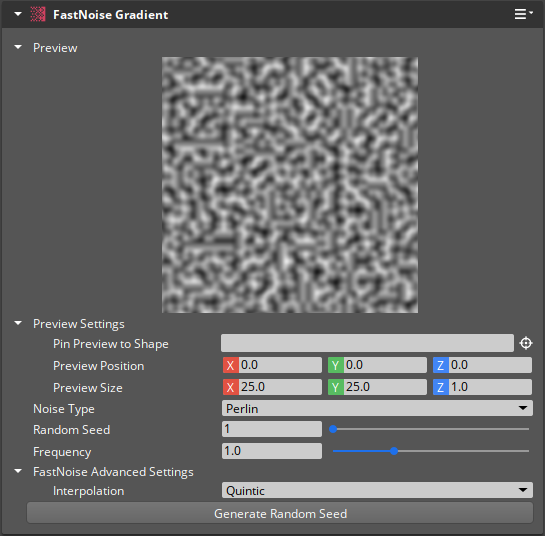
| Property | Description | Values | Default |
|---|---|---|---|
| Preview | Displays the output gradient of this component after all properties are applied. Click the previewer icon in the top of the preview image to show a larger preview of the gradient in a dockable window. | ||
| Pin Preview to Shape | Sets an entity with a compatible Shape component to use as the bounds of the preview if Constrain to Shape is Enabled. | EntityId | Current Entity |
| Preview Position | Sets the world location of the preview. This field is available only if there is no entity selected in Pin Preview to Shape. | Vector3: -Infinity to Infinity | X:0.0, Y:0.0, Z:0.0 |
| Preview Size | Sets the dimensions of the preview. | Vector3: 0.0 to Infinity | X:1.0, Y:1.0, Z:1.0 |
| Constrain to Shape | If Enabled, the gradient preview uses the bounds of the entity selected in Pin Preview to Shape.This field is available only if an entity is selected in Pin Preview to Shape. | Boolean | Disabled |
| Noise Type | Sets the noise generation algorithm used to generate the gradient. | Value, Value Fractal, Perlin, Perlin Fractal, Simplex, Simplex Fractal, Cellular, White Noise, Cubic, or Cubic Fractal | Perlin Fractal |
| Random Seed | Sets the initialization value for the pseudorandom noise generation algorithm. Each value generates a different pattern of noise. | Integer: 1 to Infinity | 1 |
| Frequency | Sets the frequency of the generated noise. Smaller values result in noise that is dilated and larger values result in noise that is condensed. | Float: 0.0001 - Infinity | 1.0 |
| FastNoise Advanced Settings - Interpolation | Sets the function used to smooth between gradient values. Refer to the following section for Interpolation type descriptions and examples. | Linear, Hermite, or Quintic | Quintic |
| Generate Random Seed | Sets the Random Seed property to a random value. |
Perlin Interpolation type examples
| Interpolation Type | Description | Example Gradient |
|---|---|---|
Linear | Linear interpolation produces angular artifacts. |  |
Hermite | Hermite interpolation produces smooth blurred values. |  |
Quintic | Quintic interpolation produces more defined edges than Hermite without the angular artifacts of Linear. |  |

| Property | Description | Values | Default |
|---|---|---|---|
| Preview | Displays the output gradient of this component after all properties are applied. Click the previewer icon in the top of the preview image to show a larger preview of the gradient in a dockable window. | ||
| Pin Preview to Shape | Sets an entity with a compatible Shape component to use as the bounds of the preview if Constrain to Shape is Enabled. | EntityId | Current Entity |
| Preview Position | Sets the world location of the preview. This field is available only if there is no entity selected in Pin Preview to Shape. | Vector3: -Infinity to Infinity | X:0.0, Y:0.0, Z:0.0 |
| Preview Size | Sets the dimensions of the preview. | Vector3: 0.0 to Infinity | X:1.0, Y:1.0, Z:1.0 |
| Constrain to Shape | If Enabled, the gradient preview uses the bounds of the entity selected in Pin Preview to Shape.This field is available only if an entity is selected in Pin Preview to Shape. | Boolean | Disabled |
| Noise Type | Sets the noise generation algorithm used to generate the gradient. | Value, Value Fractal, Perlin, Perlin Fractal, Simplex, Simplex Fractal, Cellular, White Noise, Cubic, or Cubic Fractal | Perlin Fractal |
| Random Seed | Sets the initialization value for the pseudorandom noise generation algorithm. Each value generates a different pattern of noise. | Integer: 1 to Infinity | 1 |
| Frequency | Sets the frequency of the generated noise. Smaller values result in noise that is dilated and larger values result in noise that is condensed. | Float: 0.0001 - Infinity | 1.0 |
| Octaves | Sets the number of recursions of pattern generation. Higher values produce finer details. Values higher than 4 may not be perceptible. | Integer: 0 - 8 | 4 |
| Lacunarity | Sets a frequency multiplier to apply to successive Octaves. | Float 0.0 to Infinity | 2.0 |
| Gain | Sets a relative strength multiplier to apply to successive Octaves. | Float: 0.0 to Infinity | 0.5 |
| FastNoise Advanced Settings - Interpolation | Sets the function used to smooth between gradient values. Refer to the following section for Interpolation type descriptions and examples. | Linear, Hermite, or Quintic | Quintic |
| FastNoise Advanced Settings - Fractal Type | Sets the method of fractal combination. Refer to the following section for Fractal Type descriptions and examples. | FBM, Billow, or Rigid Multi | FBM |
| Generate Random Seed | Sets the Random Seed property to a random value. |
Perlin Fractal Interpolation type examples
| Interpolation Type | Description | Example Gradient |
|---|---|---|
Linear | Linear interpolation produces angular artifacts. |  |
Hermite | Hermite interpolation produces smooth blurred values. |  |
Quintic | Quintic interpolation produces more defined edges than Hermite without the angular artifacts of Linear. |  |
Perlin Fractal Type examples
| Fractal Type | Description | Example Gradient |
|---|---|---|
FBM | FBM or fractional Brownian motion adds multiple frequencies and amplitudes of the noise signal together. |  |
Billow | A variant of FBM. Billow adds the absolute value of multiple frequencies and amplitudes of the noise signal together. This produces extreme lows in the gradient’s values. |  |
Rigid Multi | A variant of FBM. Rigid Multi subtracts the inverse of the absolute value of multiple frequencies and amplitudes of the noise signal from each other. This produces extreme highs in the gradient’s values. |  |
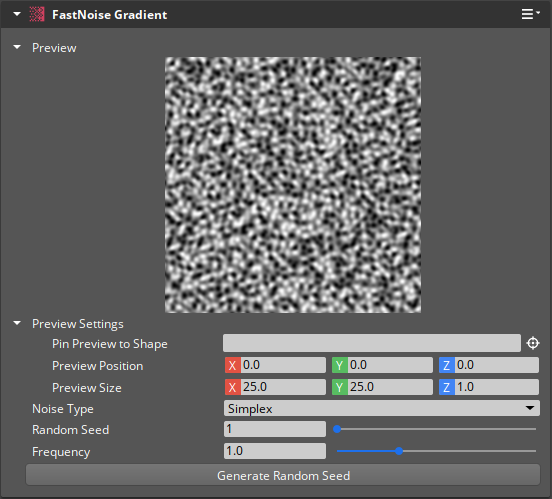
| Property | Description | Values | Default |
|---|---|---|---|
| Preview | Displays the output gradient of this component after all properties are applied. Click the previewer icon in the top of the preview image to show a larger preview of the gradient in a dockable window. | ||
| Pin Preview to Shape | Sets an entity with a compatible Shape component to use as the bounds of the preview if Constrain to Shape is Enabled. | EntityId | Current Entity |
| Preview Position | Sets the world location of the preview. This field is available only if there is no entity selected in Pin Preview to Shape. | Vector3: -Infinity to Infinity | X:0.0, Y:0.0, Z:0.0 |
| Preview Size | Sets the dimensions of the preview. | Vector3: 0.0 to Infinity | X:1.0, Y:1.0, Z:1.0 |
| Constrain to Shape | If Enabled, the gradient preview uses the bounds of the entity selected in Pin Preview to Shape.This field is available only if an entity is selected in Pin Preview to Shape. | Boolean | Disabled |
| Noise Type | Sets the noise generation algorithm used to generate the gradient. | Value, Value Fractal, Perlin, Perlin Fractal, Simplex, Simplex Fractal, Cellular, White Noise, Cubic, or Cubic Fractal | Perlin Fractal |
| Random Seed | Sets the initialization value for the pseudorandom noise generation algorithm. Each value generates a different pattern of noise. | Integer: 1 to Infinity | 1 |
| Frequency | Sets the frequency of the generated noise. Smaller values result in noise that is dilated and larger values result in noise that is condensed. | Float: 0.0001 - Infinity | 1.0 |
| Generate Random Seed | Sets the Random Seed property to a random value. |
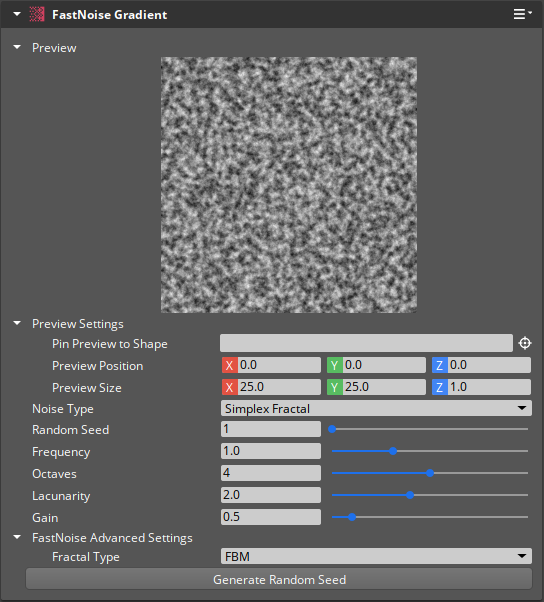
| Property | Description | Values | Default |
|---|---|---|---|
| Preview | Displays the output gradient of this component after all properties are applied. Click the previewer icon in the top of the preview image to show a larger preview of the gradient in a dockable window. | ||
| Pin Preview to Shape | Sets an entity with a compatible Shape component to use as the bounds of the preview if Constrain to Shape is Enabled. | EntityId | Current Entity |
| Preview Position | Sets the world location of the preview. This field is available only if there is no entity selected in Pin Preview to Shape. | Vector3: -Infinity to Infinity | X:0.0, Y:0.0, Z:0.0 |
| Preview Size | Sets the dimensions of the preview. | Vector3: 0.0 to Infinity | X:1.0, Y:1.0, Z:1.0 |
| Constrain to Shape | If Enabled, the gradient preview uses the bounds of the entity selected in Pin Preview to Shape.This field is available only if an entity is selected in Pin Preview to Shape. | Boolean | Disabled |
| Noise Type | Sets the noise generation algorithm used to generate the gradient. | Value, Value Fractal, Perlin, Perlin Fractal, Simplex, Simplex Fractal, Cellular, White Noise, Cubic, or Cubic Fractal | Perlin Fractal |
| Random Seed | Sets the initialization value for the pseudorandom noise generation algorithm. Each value generates a different pattern of noise. | Integer: 1 to Infinity | 1 |
| Frequency | Sets the frequency of the generated noise. Smaller values result in noise that is dilated and larger values result in noise that is condensed. | Float: 0.0001 - Infinity | 1.0 |
| Octaves | Sets the number of recursions of pattern generation. Higher values produce finer details. Values higher than 4 may not be perceptible. | Integer: 0 - 8 | 4 |
| Lacunarity | Sets a frequency multiplier to apply to successive Octaves. | Float 0.0 to Infinity | 2.0 |
| Gain | Sets a relative strength multiplier to apply to successive Octaves. | Float: 0.0 to Infinity | 0.5 |
| FastNoise Advanced Settings - Fractal Type | Sets the method of fractal combination. Refer to the following section for Fractal Type descriptions and examples. | FBM, Billow, or Rigid Multi | FBM |
| Generate Random Seed | Sets the Random Seed property to a random value. |
Simplex Fractal Type examples
| Fractal Type | Description | Example Gradient |
|---|---|---|
FBM | FBM or fractional Brownian motion adds multiple frequencies and amplitudes of the noise signal together. |  |
Billow | A variant of FBM. Billow adds the absolute value of multiple frequencies and amplitudes of the noise signal together. This produces extreme lows in the gradient’s values. |  |
Rigid Multi | A variant of FBM. Rigid Multi subtracts the inverse of the absolute value of multiple frequencies and amplitudes of the noise signal from each other. This produces extreme highs in the gradient’s values. |  |
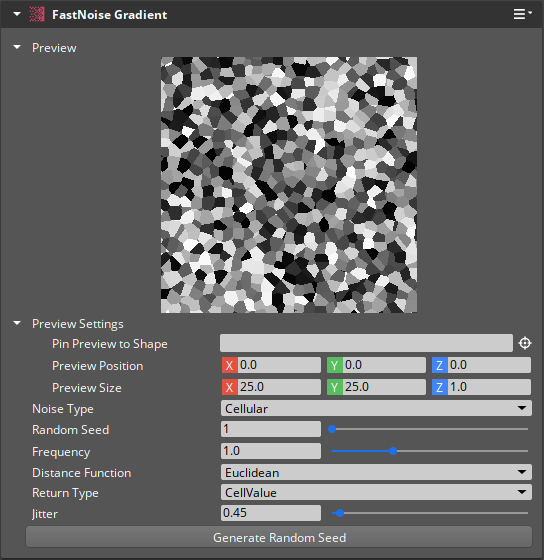
| Property | Description | Values | Default |
|---|---|---|---|
| Preview | Displays the output gradient of this component after all properties are applied. Click the previewer icon in the top of the preview image to show a larger preview of the gradient in a dockable window. | ||
| Pin Preview to Shape | Sets an entity with a compatible Shape component to use as the bounds of the preview if Constrain to Shape is Enabled. | EntityId | Current Entity |
| Preview Position | Sets the world location of the preview. This field is available only if there is no entity selected in Pin Preview to Shape. | Vector3: -Infinity to Infinity | X:0.0, Y:0.0, Z:0.0 |
| Preview Size | Sets the dimensions of the preview. | Vector3: 0.0 to Infinity | X:1.0, Y:1.0, Z:1.0 |
| Constrain to Shape | If Enabled, the gradient preview uses the bounds of the entity selected in Pin Preview to Shape.This field is available only if an entity is selected in Pin Preview to Shape. | Boolean | Disabled |
| Noise Type | Sets the noise generation algorithm used to generate the gradient. | Value, Value Fractal, Perlin, Perlin Fractal, Simplex, Simplex Fractal, Cellular, White Noise, Cubic, or Cubic Fractal | Perlin Fractal |
| Random Seed | Sets the initialization value for the pseudorandom noise generation algorithm. Each value generates a different pattern of noise. | Integer: 1 to Infinity | 1 |
| Frequency | Sets the frequency of the generated noise. Smaller values result in noise that is dilated and larger values result in noise that is condensed. | Float: 0.0001 - Infinity | 1.0 |
| Distance Function | Sets the distance function used to calculate the cell value for a given point. The distance functions produce different cell shapes. Refer to the following section for Distance Function examples and descriptions. | Euclidean, Manhattan, or Natural | Euclidean |
| Return Type | Sets the type of value that the cellular function returns. Refer to the following section for Return Type examples. | CellValue, Distance, Distance2, Distance2Add, Distance2Sub, Distance2Mul, or Distance2Div | CellValue |
| Jitter | Sets the maximum distance that a cellular point can move from its original position. Values above 1.0 may produce artifacts from clamped multiplications. | Float: 0.0 to Infinity | 0.45 |
| Generate Random Seed | Sets the Random Seed property to a random value. |
Distance Function examples
| Distance Function | Example Gradient |
|---|---|
Euclidean | 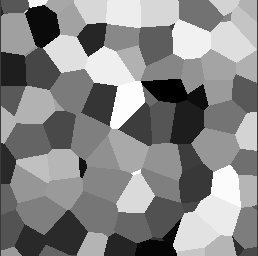 |
Manhattan | 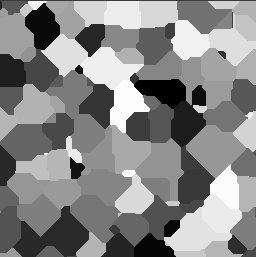 |
Natural | 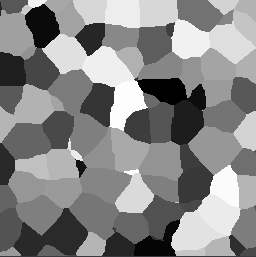 |
Return Type examples
| Return Type | Description | Example Gradient |
|---|---|---|
CellValue | Returns the value of the nearest feature point at any given world position. | 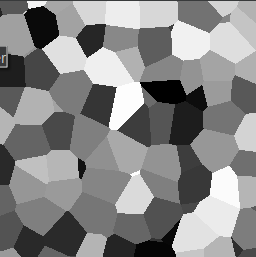 |
Distance | Returns the distance to the nearest feature point at any given world position. | 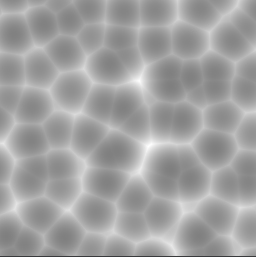 |
Distance2 | Returns the distance to the second-nearest feature point at any given world position. | 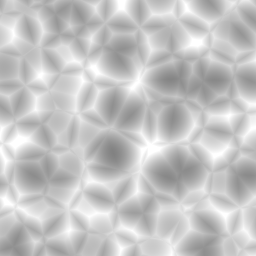 |
Distance2Add | Returns the distances of the two closest feature points added together. | 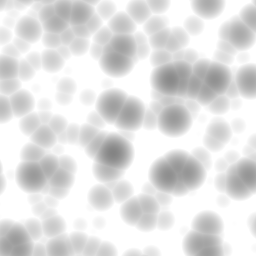 |
Distance2Sub | Returns the distances of the two closest feature points subtracted from each other. | 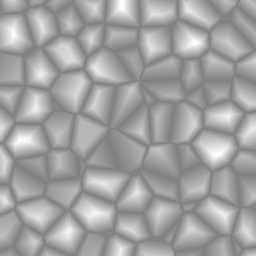 |
Distance2Mul | Returns the distances of the two closest feature points multiplied together. | 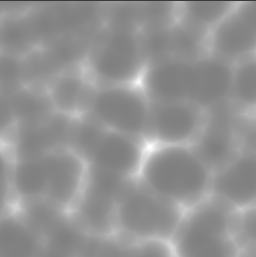 |
Distance2Div | Returns the distance of the closest feature point divided by the distance of the second-closest feature point. | 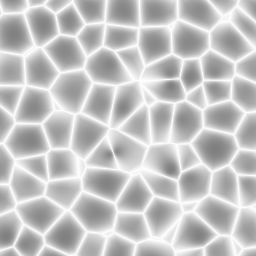 |
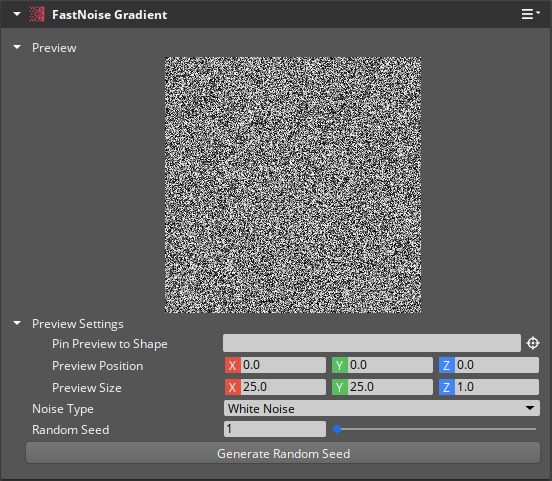
| Property | Description | Values | Default |
|---|---|---|---|
| Preview | Displays the output gradient of this component after all properties are applied. Click the previewer icon in the top of the preview image to show a larger preview of the gradient in a dockable window. | ||
| Pin Preview to Shape | Sets an entity with a compatible Shape component to use as the bounds of the preview if Constrain to Shape is Enabled. | EntityId | Current Entity |
| Preview Position | Sets the world location of the preview. This field is available only if there is no entity selected in Pin Preview to Shape. | Vector3: -Infinity to Infinity | X:0.0, Y:0.0, Z:0.0 |
| Preview Size | Sets the dimensions of the preview. | Vector3: 0.0 to Infinity | X:1.0, Y:1.0, Z:1.0 |
| Constrain to Shape | If Enabled, the gradient preview uses the bounds of the entity selected in Pin Preview to Shape.This field is available only if an entity is selected in Pin Preview to Shape. | Boolean | Disabled |
| Noise Type | Sets the noise generation algorithm used to generate the gradient. | Value, Value Fractal, Perlin, Perlin Fractal, Simplex, Simplex Fractal, Cellular, White Noise, Cubic, or Cubic Fractal | Perlin Fractal |
| Random Seed | Sets the initialization value for the pseudorandom noise generation algorithm. Each value generates a different pattern of noise. | Integer: 1 to Infinity | 1 |
| Generate Random Seed | Sets the Random Seed property to a random value. |
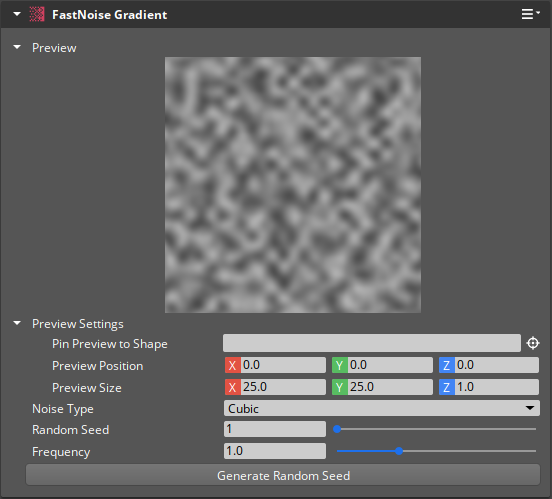
| Property | Description | Values | Default |
|---|---|---|---|
| Preview | Displays the output gradient of this component after all properties are applied. Click the previewer icon in the top of the preview image to show a larger preview of the gradient in a dockable window. | ||
| Pin Preview to Shape | Sets an entity with a compatible Shape component to use as the bounds of the preview if Constrain to Shape is Enabled. | EntityId | Current Entity |
| Preview Position | Sets the world location of the preview. This field is available only if there is no entity selected in Pin Preview to Shape. | Vector3: -Infinity to Infinity | X:0.0, Y:0.0, Z:0.0 |
| Preview Size | Sets the dimensions of the preview. | Vector3: 0.0 to Infinity | X:1.0, Y:1.0, Z:1.0 |
| Constrain to Shape | If Enabled, the gradient preview uses the bounds of the entity selected in Pin Preview to Shape.This field is available only if an entity is selected in Pin Preview to Shape. | Boolean | Disabled |
| Noise Type | Sets the noise generation algorithm used to generate the gradient. | Value, Value Fractal, Perlin, Perlin Fractal, Simplex, Simplex Fractal, Cellular, White Noise, Cubic, or Cubic Fractal | Perlin Fractal |
| Random Seed | Sets the initialization value for the pseudorandom noise generation algorithm. Each value generates a different pattern of noise. | Integer: 1 to Infinity | 1 |
| Frequency | Sets the frequency of the generated noise. Smaller values result in noise that is dilated and larger values result in noise that is condensed. | Float: 0.0001 - Infinity | 1.0 |
| Generate Random Seed | Sets the Random Seed property to a random value. |
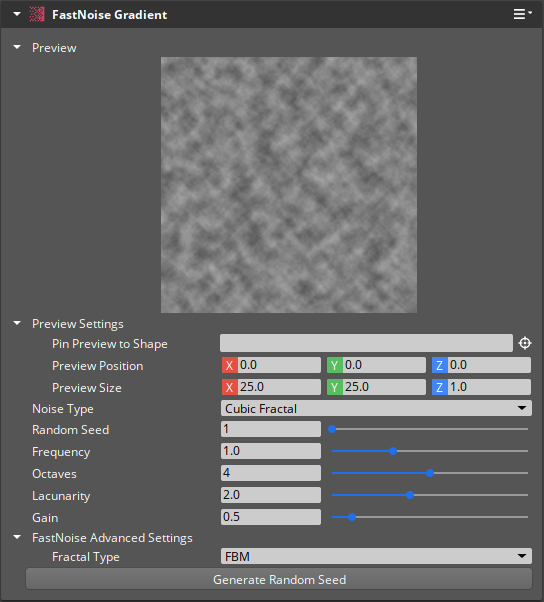
| Property | Description | Values | Default |
|---|---|---|---|
| Preview | Displays the output gradient of this component after all properties are applied. Click the previewer icon in the top of the preview image to show a larger preview of the gradient in a dockable window. | ||
| Pin Preview to Shape | Sets an entity with a compatible Shape component to use as the bounds of the preview if Constrain to Shape is Enabled. | EntityId | Current Entity |
| Preview Position | Sets the world location of the preview. This field is available only if there is no entity selected in Pin Preview to Shape. | Vector3: -Infinity to Infinity | X:0.0, Y:0.0, Z:0.0 |
| Preview Size | Sets the dimensions of the preview. | Vector3: 0.0 to Infinity | X:1.0, Y:1.0, Z:1.0 |
| Constrain to Shape | If Enabled, the gradient preview uses the bounds of the entity selected in Pin Preview to Shape.This field is available only if an entity is selected in Pin Preview to Shape. | Boolean | Disabled |
| Noise Type | Sets the noise generation algorithm used to generate the gradient. | Value, Value Fractal, Perlin, Perlin Fractal, Simplex, Simplex Fractal, Cellular, White Noise, Cubic, or Cubic Fractal | Perlin Fractal |
| Random Seed | Sets the initialization value for the pseudorandom noise generation algorithm. Each value generates a different pattern of noise. | Integer: 1 to Infinity | 1 |
| Frequency | Sets the frequency of the generated noise. Smaller values result in noise that is dilated and larger values result in noise that is condensed. | Float: 0.0001 - Infinity | 1.0 |
| Octaves | Sets the number of recursions of pattern generation. Higher values produce finer details. Values higher than 4 may not be perceptible. | Integer: 0 - 8 | 4 |
| Lacunarity | Sets a frequency multiplier to apply to successive Octaves. | Float 0.0 to Infinity | 2.0 |
| Gain | Sets a relative strength multiplier to apply to successive Octaves. | Float: 0.0 to Infinity | 0.5 |
| FastNoise Advanced Settings - Fractal Type | Sets the method of fractal combination. Refer to the following section for Fractal Type descriptions and examples. | FBM, Billow, or Rigid Multi | FBM |
| Generate Random Seed | Sets the Random Seed property to a random value. |
Cubic Fractal Type examples
| Fractal Type | Description | Example Gradient |
|---|---|---|
FBM | FBM or fractional Brownian motion adds multiple frequencies and amplitudes of the noise signal together. |  |
Billow | A variant of FBM. Billow adds the absolute value of multiple frequencies and amplitudes of the noise signal together. This produces extreme lows in the gradient’s values. |  |
Rigid Multi | A variant of FBM. Rigid Multi subtracts the inverse of the absolute value of multiple frequencies and amplitudes of the noise signal from each other. This produces extreme highs in the gradient’s values. |  |
FastNoiseGradientRequestBus
Use the following request functions with the FastNoiseGradientRequestBus EBus interface to communicate with FastNoise Gradient components in your game.
| Request Name | Description | Parameter | Return | Scriptable |
|---|---|---|---|---|
GetFractalType | Returns the value of the FastNoise Advanced Settings - Fractal Type property. | None | Fractal Type Index: Integer | Yes |
GetFrequency | Returns the value of the Frequency property. | None | Float | Yes |
GetGain | Returns the value of the Gain property. | None | Float | Yes |
GetInterpolation | Returns the value of the FastNoise Advanced Settings - Interpolation property. | None | Interpolation Index: Integer | Yes |
GetLacunarity | Returns the value of the Lacunarity property. | None | Float | Yes |
GetNoiseType | Returns the value of the Noise Type property. | None | Noise Type Index: Integer | Yes |
GetOctaves | Returns the value of the Octaves property. | None | Octave Count: Integer | Yes |
GetRandomSeed | Returns the value of the Random Seed property. | None | Seed: Integer | Yes |
SetFractalType | Sets the value of the FastNoise Advanced Settings - Fractal Type property. | Fractal Type Index: Integer | None | Yes |
SetFrequency | Sets the value of the Frequency property. | Float | None | Yes |
SetGain | Sets the value of the Gain property. | Float | None | Yes |
SetInterpolation | Sets the value of the FastNoise Advanced Settings - Interpolation property. | Interpolation Index: Integer | None | Yes |
SetLacunarity | Sets the value of the Lacunarity property. | Float | None | Yes |
SetNoiseType | Sets the value of the Noise Type property. | Noise Type Index: Integer | None | Yes |
SetOctaves | Sets the value of the Octaves property. | Octave Count: Integer | None | Yes |
SetRandomSeed | Sets the value of the Random Seed property. | Seed: Integer | None | Yes |
